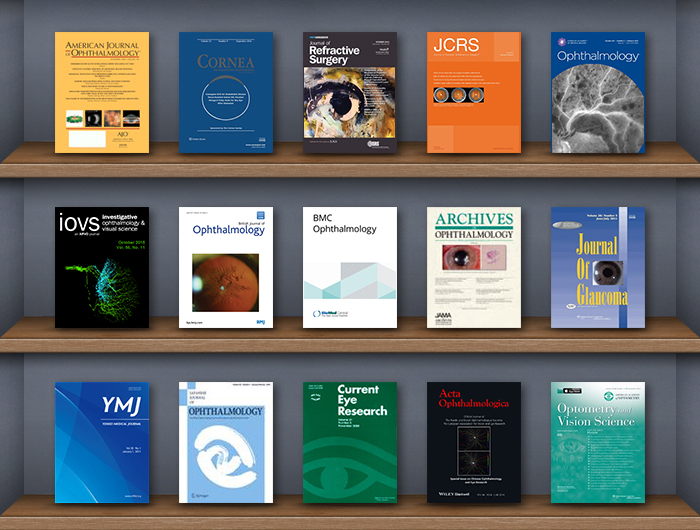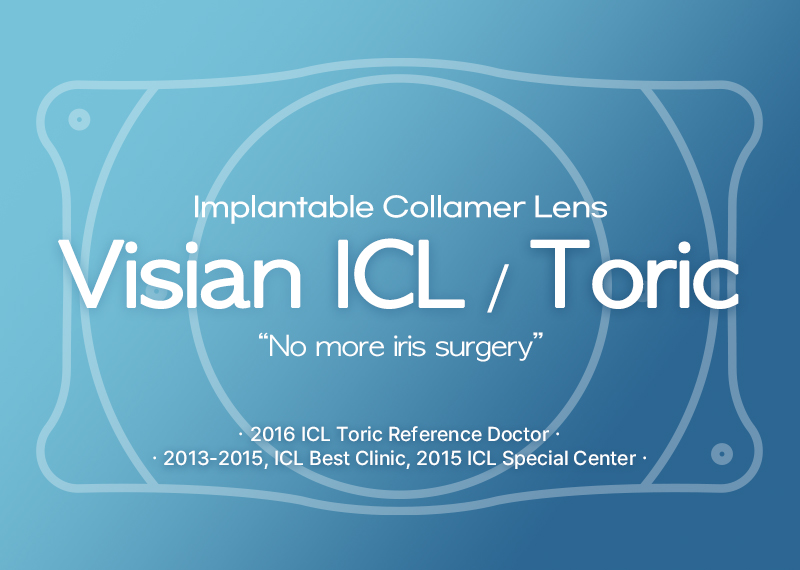
EYEREUM offers EVO+ Visian ICL™, the latest premium posterior implantable contact lens available. The VISIAN ICL uses CentraFLOW Technology and offers a sharper, clearer and more vivid vision correction without an incision to the iris. The CentraFLOW Technology has already proven for its safety and effectiveness in Japanese and European Multicenters and it is currently being used in Europe.

EVO+ Visian ICL™ prevents blockage from any possible residue in the eye through a 360㎛ hole in the center of the lens. This also assists the flow of aqueous fluid. The improved aqueous flow greatly reduces the possibility of cataract caused by the contact between ICL and the natural lens of the eye.

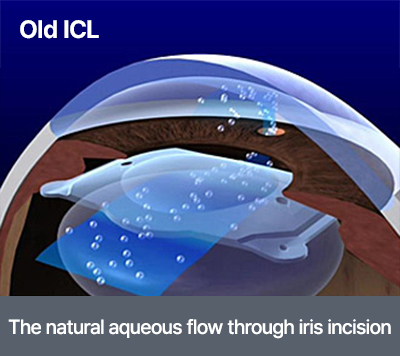
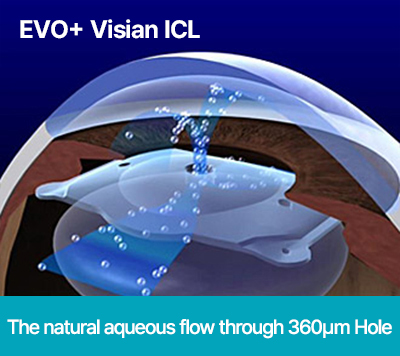
Toric ICL is the identical material and structure as the standard ICL and Aqua ICL, but is most effective in correcting astigmatism. Thus, it is an extremely useful lens for people who have both high degrees of myopia and severe astigmatism. The lens is inserted behind the iris just like the standard ICL, so myopia and astigmatism can be both corrected at the same time with one simple procedure.
Additionally, Toric Aqua ICL prevents blockage from any possible residue in the eye through the 360㎛ hole in the center of the lens. And as this helps the flow of aqueous fluid, there is no need for an iris incision.
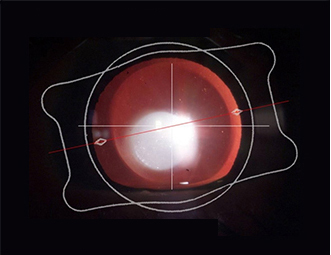

High-dimensional analysis of corneal and iris shape and angle by taking three-dimensional, 360-degree images of the eye's spatial structure. It accurately measures a depth of approximately 13mm from the anterior to posterior cornea and is essential for lens implantation.

Screen for glaucoma. Optic nerve tomography with CIRRUS OCT to compare to age-specific averages and review safety.

These are polygonal cells located in the innermost part of the cornea, and there are approximately 2,000 of them in adults, each of which is primarily hexagonal in shape. Keratoconus is an advanced diagnostic test that examines the endothelial cells lining the cornea.

Just as a T-shirt comes in S, M, L, XL sizes, so does the ICL. A thorough preliminary examination will determine which size is compatible for you. However as this method was designed for Westerners’ eyes, it sometimes brought about side effects to Asians. EYEREUM, focusing on this problem, presented <ICL calculation method suitable for Koreans> and was awarded ICL Global Expert from STAAR Surgical Inc., the maker of ICL..

Presentation about the proper size of ICLs “to minimize side effects after ICL surgery”

The standard, size calculation and results of ICL

If the ICL size is too big, there is concern for closed-angle glaucoma.

If the ICL size is too small, it can come into contact with the eye’s natural lens and increase the risk of cataract.
Even though the results of the Sensitivity & Singularity Analysis show 93.4%, there is always a 6.6% chance for unexpectedness. So for a completely safe ICL surgery, it is both crucial to use the most ideal and suitable size lens and to have the surgery by a qualified and experienced surgeon.

-
01 Advantages
- Unlike LASIK or LASEK, the cornea is intact /untouched, so the procedure can be reversed.
- Vision correction is possible to those with thin corneas and weren’t eligible for LASIK or LASEK.
- It can maintain a stable vision without myopia regression/degeneration.
- The placement of the ICL makes the lens invisible to the patient and any observer.
- There are no side effects like corneal flap detachment or keratoconus which are attainable from LASIK.
- A sharper, clearer and more vivid vision can be obtained with less chance of night blurred vision or halo vision.
- It is a simple procedure using topical anesthetic eye-drops.
- The tiny incision reduces the risk of astigmatism
- The 3mm incision doesn’t require stitches /sutures and self-heals quickly.
-
02 Considerations
- Before undergoing any vision correction treatment, you should consult with an ophthalmologist who understands lens implantation and is experienced in the procedure.
- A thorough examination and consultation with an experienced surgeon is essential before surgery.
- The size and vaulting of the ICL is very important to prevent side effects such as cataracts and glaucoma.
- The anterior chamber depth should be at least 3.0mm.-Intraocular pressure should be checked at regular postoperative checkups to ensure that it is normal.
- It is a highly specialized surgery and should be performed by an experienced surgeon.-Suitable for correcting myopia and astigmatism.
- During the preoperative examination, both day and night pupil sizes are measured to design the surgery.
-
01 Candidates for ICL
- Excessive Myopia: When patients suffering from excessive myopia undergo any laser correction surgery, a large amount of corneal tissue has to be removed, which causes side effects. So implanting an intraocular lens is much safer and more stable.
- Thin corneal thickness: Those with moderate myopia may have such a thin cornea that laser surgery isn’t advisable.
- Corneal scarring or corneal disease: The ICL doesn’t damage the cornea tissues and is applicable to those with corneal problems.
- Extreme dry-eyes: As laser surgery can induce dry-eyes, those already suffering from dry-eyes need to consult their special beforehand.
-
02 Not a candidate for ICL
- Those with a low degree of myopia of astigmatism can easily correct their vision through LASIK, and do not require ICL.
- Those with glaucoma, cataract, or keratoconus, with a low corneal endothelial cell count, a shallow frontal depth, and other corneal lesions / iritis or iridolysis, / systemic diseases such as diabetes or high blood pressure.












